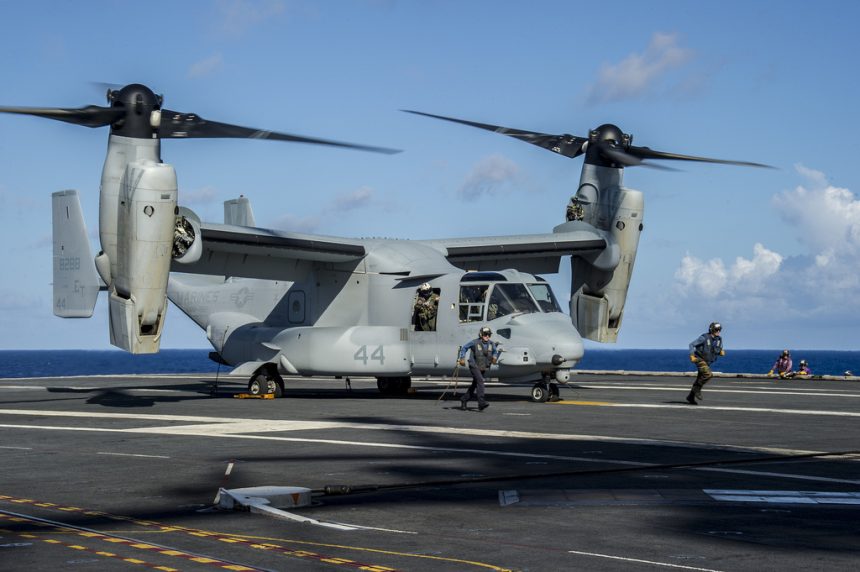On Jun. 14, a U.S. Marine Corps MV-22 Osprey made a landing aboard a Japanese ship near U.S. West Coast.
The Osprey landed on a Japanese heli-carrier-destroyer Hyūga, during a 18-day exercise.
Taking into the consideration the unfavourable opinion of the Osprey tilt-rotor aircraft in Japan, stemming from the crashes involving CV-22s in Florida and Morocco this is an important step forward, possibly a part of a Public Relations campaign aimed at advertising the Osprey as a safe aircraft.
A campaign that has achieved some important results, at least domestically, as Boeing has recently been awarded a $6.5 Billion Order for 99 more Ospreys: 92 MV-22s and 7 CV-22s.
The PR campaign carried out since last year included showing off M/CV-22’s capabilities in many combat scenarios (and airshows).
It was after additional warranties were given that Japanese government accepted the fact that 12 Ospreys are to be stationed in Okinawa.
Deploying the Ospreys to Okinawa resulted in a large social protest in that region, as people were afraid one of the planes might crash in some of the densely populated areas over there.
Image credit: US Navy
Jacek Siminski for TheAviationist













